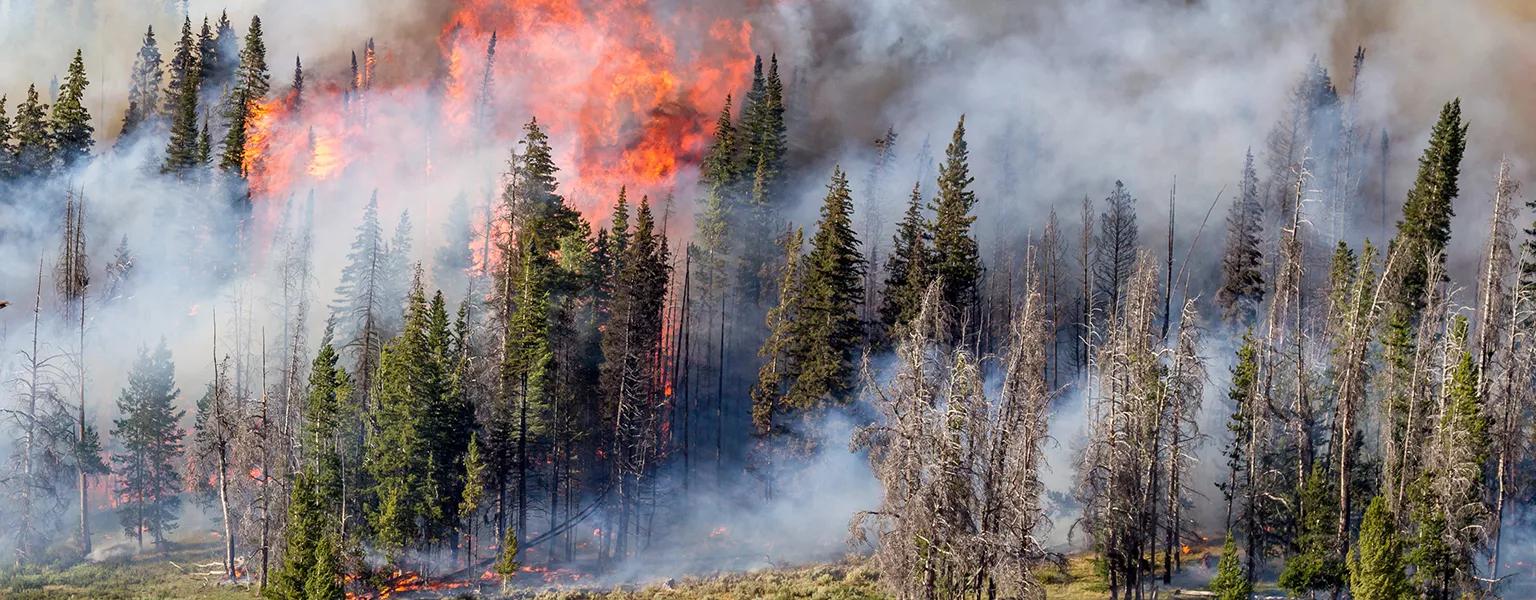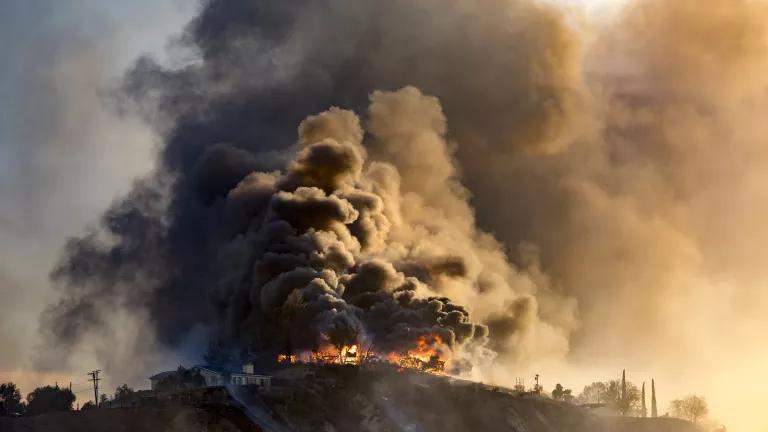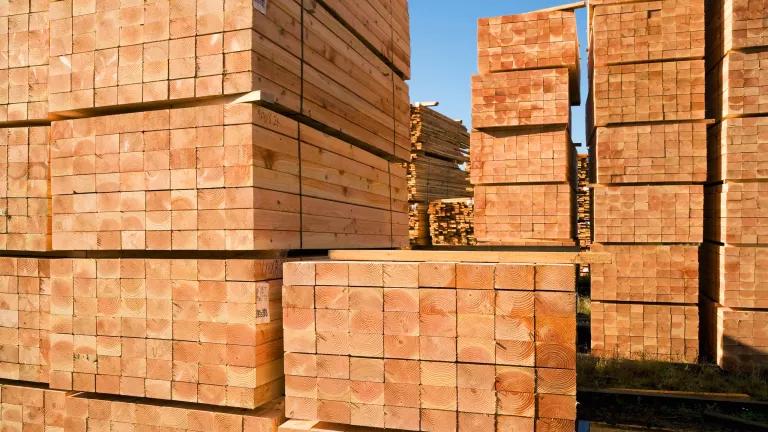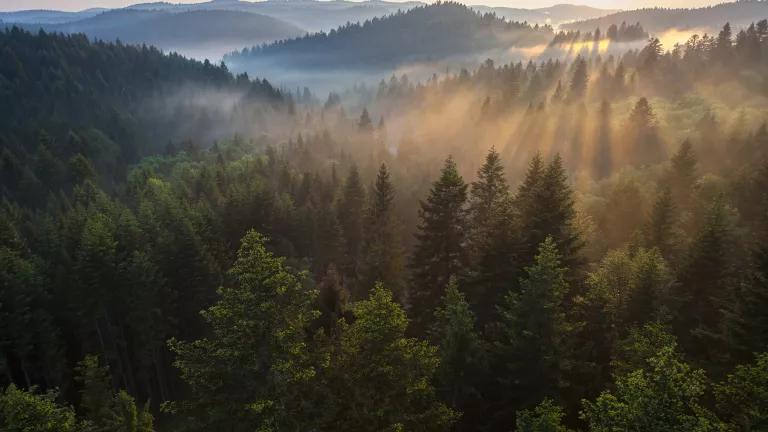
Overview
Healthy ecosystems not only provide critical habitat, clean air and water, flooding control, food security, healthy soils, and disease regulation, but they also capture and store vast amounts of carbon. We must advance policies that preserve nature as a potent, essential climate solution while also addressing our biodiversity crisis and ensuring equitable solutions for all. Together with Indigenous leaders and other local partners, we’re supporting efforts to save critical ecosystems, like Canada’s boreal, and sacred places like New Mexico’s Greater Chaco Region and Chile’s Atacama Plateau, from unsustainable exploitation for timber, fossil fuels, lithium, and other resources. We must continue to protect precious landscapes, fight for globally equitable forest protection frameworks, uphold bedrock environmental laws—including the National Environmental Policy Act—and work to advance Indigenous Peoples’ self-determination on their lands.
Solutions
There is no one-size-fits-all solution for conserving our lands, and that’s why we take a wide-ranging approach to this mission. Here are our current priorities:
Protect primary and mature forests from logging
We’re working to ensure protections for carbon-rich primary and mature forests—which are being logged for everything from lumber and paper to biomass that is exported abroad and burned—as well as the rights of the Indigenous Peoples who live there. NRDC has drawn much-needed attention to the importance of protecting forests in the Global North, alongside those in the tropics, as some of the most carbon-rich and threatened forest regions in the world. Our work includes advancing marketplace commitments and state and federal policies to protect irreplaceable primary forests and stop the “tree-to-toilet pipeline,” in which major tissue brands are exploiting old-growth forests in the Canadian boreal to make their throwaway products. We’re also working to expose the forest biomass industry as the climate villain it is, rather than the carbon-neutral energy source the industry falsely claims it is, as it seeks subsidies and exemptions from regulations. And we’re leading a coalition working to preserve the climate and biodiversity by ending the avoidable logging of mature forests and trees on U.S. federal lands.
Did You Know?
Some 70 million Indigenous Peoples around the globe depend on healthy forests for not only their livelihoods but also as deeply integral parts of their cultural identities. Clearcutting jeopardizes sources of food, water, and income, as well as Indigenous ways of life.
Build support for 30x30
We support the urgent call—endorsed by the Intergovernmental Panel on Climate Change—to protect and restore at least 30 percent of the world’s natural areas by 2030, particularly under the leadership of Indigenous Peoples, and to secure the healthy foundations of human society. Toward that end, we’re working with Indigenous Peoples, scientists, and other stakeholders to identify the most important areas to protect. We’re also working to ensure that the first-ever U.S. national conservation strategy results in meaningful actions to remedy the structural inequity that has left people of color more than three times as likely as their white counterparts to live in nature-deprived areas.
End drilling and fracking on sacred lands
We’re pushing decision makers to stop the expansion of fossil fuel infrastructure in regions like New Mexico’s Greater Chaco—sacred to the Diné people of the Navajo Nation—which has around 40,000 existing oil and wells. We’re also calling attention to the ways in which our federal government incentivizes this dirty and destructive industry through taxpayer dollars. Ending fossil fuel giveaways is a no-brainer and an essential step in the effort to eliminate the industry’s threat to communities, nature, and the planet’s future.
“Forests are defined by their interconnectedness. From latticework, lichen-strewn branches and rich brocades of roots, soils, and microbes to the wondrous, hidden mycorrhizal ‘wood-wide web,’ forests are communities, a gestalt, that defies reduction to its constituent parts.”
Jennifer Skene, natural climate solutions policy manager, International Program
Progress
- Countries are beginning to implement the Glasgow Leaders’ Declaration on Forests and Land Use, a commitment from more than 141 nations to end and reverse forest loss and land degradation by 2030.
- The United States is reinstating protections for its last big rainforest, the Tongass National Forest, which is vital and precious to Alaska Native tribes, fish, and wildlife.
- President Biden issued an executive order recognizing the climate importance of mature and old-growth forests and committing federal agencies to protecting them.
- Canada announced its intent to reform its forest carbon accounting practices, which at present significantly underestimate the logging industry’s climate impact.
- Colorado is now requiring state agencies and departments to give preference to vendors that avoid both tropical and boreal deforestation and intact forest degradation and guarantee Indigenous Peoples’ right to free, prior, and informed consent for any industrial operations on their traditional territories.
- The Cree Nation secured an unprecedented protected areas agreement with Quebec that will safeguard 9.6 million acres of Eeyou Istchee, its traditional territory.
- Shareholders of Procter & Gamble and Home Depot, two major drivers of forest loss in the boreal and other regions, overwhelmingly passed resolutions calling on the companies to take action to address their forest impacts, in the largest investor action on deforestation in history.
- China is moving to safeguard critical habitats and species through its national park system, and the country has also established an international fund to support biodiversity protection in developing nations.
More Ways to Make an Impact
Latest News & Resources
America's mature and old-growth forests on federal lands are threatened by ongoing logging.
Urge President Biden to create strong, lasting regulatory protections for mature forests, which are a natural climate solution!

Fight climate change, save America’s mature forests!
View All Issues

Climate Change

Equity & Justice

Human Health











%20karl%20adami.jpg0713.jpg)









.jpgc11c.jpg)

